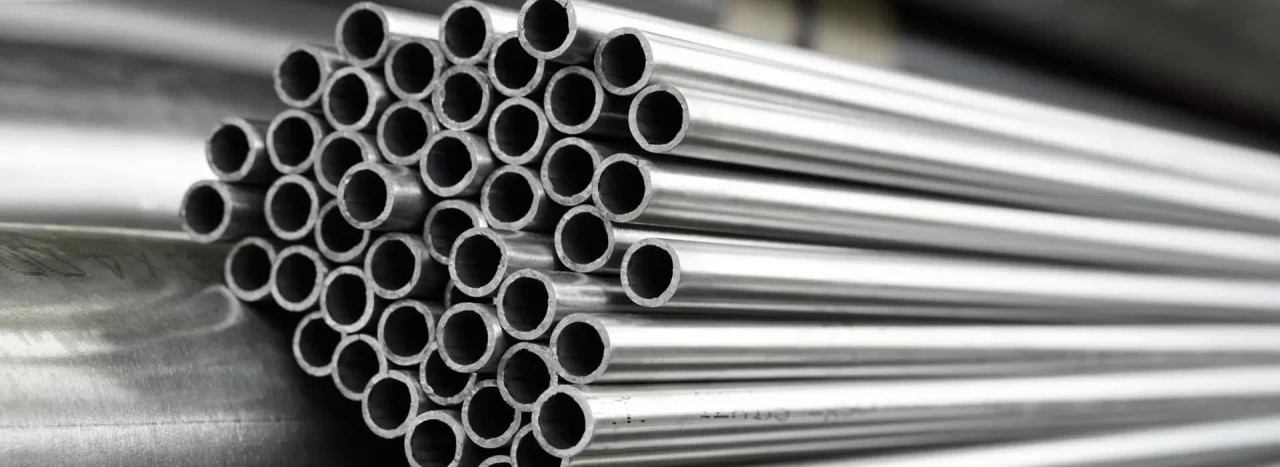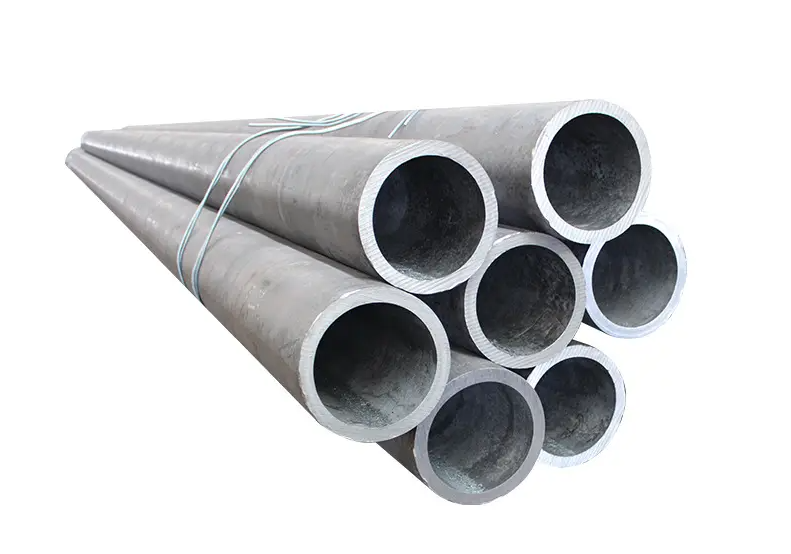Hastelloy C276 Alloy Steel Pipe | ASTM B622 UNS N10276

Hastelloy C276 Alloy Steel Pipe | ASTM B622 UNS N10276
Hastelloy C276 alloy steel pipe is one of the most sought-after materials for applications requiring exceptional corrosion resistance. Known for its ability to withstand some of the most extreme chemical environments, this alloy is frequently used in industries such as chemical processing, marine engineering, and power generation. The standard specification, ASTM B622 UNS N10276, ensures the material meets stringent quality standards for high-performance industrial uses.
In this article, we will explore the properties, applications, benefits, and specifications of Hastelloy C276 alloy steel pipe. Whether you are sourcing this material for your project or need to learn more about it, this guide covers all the essential details.
Table of Contents
| Section | Details |
|---|---|
| Introduction to Hastelloy C276 | Overview of the alloy, its characteristics, and significance |
| Chemical Composition of Hastelloy C276 | A detailed breakdown of the elements that make up this alloy |
| Properties of Hastelloy C276 Alloy Steel Pipe | Mechanical, thermal, and corrosion-resistance properties |
| ASTM B622 UNS N10276 Specification | Understanding the standard requirements for Hastelloy C276 pipes |
| Manufacturing Process | Key steps in producing ASTM B622 UNS N10276 pipes |
| Applications of Hastelloy C276 Alloy Steel Pipe | Industries and use cases for this material |
| Advantages of Using Hastelloy C276 | Key benefits of choosing this alloy steel pipe |
| Comparing Hastelloy C276 with Other Alloys | How it stacks up against similar materials |
| Common Sizes and Dimensions | Standard pipe sizes, thicknesses, and dimensions |
| Heat Treatment and Processing | Post-manufacturing treatments to enhance performance |
| Welding Techniques for Hastelloy C276 Pipes | Methods and precautions for welding this material |
| Machinability and Workability | Challenges and tips for machining Hastelloy C276 |
| Testing and Quality Assurance | Inspection processes and testing requirements for ASTM B622 UNS N10276 |
| Corrosion Resistance Properties | How this alloy performs in extreme environments |
| Longevity and Maintenance | Ensuring long service life and minimal upkeep |
| Pricing and Market Availability | Insights into cost and sourcing options |
| Environmental Impact and Sustainability | Assessing the eco-friendliness of Hastelloy C276 |
| Certifications and Approvals | Relevant certifications for using ASTM B622 UNS N10276 in critical applications |
| Tips for Purchasing Hastelloy C276 Alloy Pipes | What to consider when buying these pipes |
| Maintenance and Storage Guidelines | Proper handling and storage to ensure product integrity |
| Frequently Asked Questions | Answers to common queries about Hastelloy C276 alloy steel pipes |
| Conclusion | Final thoughts on the importance and utility of this alloy |
Introduction to Hastelloy C276
Hastelloy C276 is a nickel-molybdenum-chromium alloy with iron and tungsten additions. This unique composition offers extraordinary resistance to a wide variety of severe chemical environments, including strong oxidizers and reducing agents. Unlike standard steel, this alloy excels in environments with harsh chemicals, making it a go-to material for demanding applications.
The alloy’s inherent strength, coupled with its corrosion resistance, allows it to perform well in environments such as flue gas scrubbers, chemical reactors, and offshore oil rigs. Additionally, Hastelloy C276 can resist pitting, crevice corrosion, and stress corrosion cracking, which are common failure modes in aggressive environments.
Chemical Composition of Hastelloy C276
Hastelloy C276 derives its exceptional properties from its carefully balanced chemical composition. Below is a table detailing the key elements in ASTM B622 UNS N10276:
| Element | Composition (%) | Role |
|---|---|---|
| Nickel (Ni) | 50.0 – 60.0 | Provides overall corrosion resistance |
| Molybdenum (Mo) | 15.0 – 17.0 | Enhances resistance to pitting and crevices |
| Chromium (Cr) | 14.5 – 16.5 | Improves resistance to oxidizing agents |
| Iron (Fe) | 4.0 – 7.0 | Improves mechanical properties |
| Tungsten (W) | 3.0 – 4.5 | Increases strength and durability |
| Cobalt (Co) | Max 2.5 | Minor addition for specific applications |
| Carbon (C) | Max 0.01 | Low carbon ensures weldability |
| Manganese (Mn) | Max 1.0 | Enhances wear resistance |
| Silicon (Si) | Max 0.08 | Improves heat resistance |
| Phosphorus (P) | Max 0.04 | Maintains ductility |
| Sulfur (S) | Max 0.03 | Reduces brittleness |
This precise balance ensures that the alloy performs well in a variety of demanding applications.
Properties of Hastelloy C276 Alloy Steel Pipe
The properties of Hastelloy C276 make it an excellent choice for extreme environments. Here’s an overview:
Mechanical Properties
| Property | Value |
|---|---|
| Tensile Strength | 690 MPa (min) |
| Yield Strength | 283 MPa (min) |
| Elongation (%) | 40 (min) |
| Hardness (Brinell) | Approx. 200 HB |
Thermal Properties
| Property | Value |
|---|---|
| Melting Range | 1325 – 1370°C |
| Thermal Conductivity | 10 W/m·K |
| Coefficient of Expansion | 11 µm/m·K (25-100°C) |
Corrosion Resistance
Hastelloy C276 is resistant to:
- Hydrochloric acid
- Sulfuric acid
- Chlorine gas
- Wet chlorine
- Oxidizing and reducing media
This resistance makes it suitable for chemical reactors and marine applications.
ASTM B622 UNS N10276 Specification
ASTM B622 specifies seamless nickel-molybdenum-chromium alloy steel pipes designed for high corrosion resistance. It defines requirements for chemical composition, mechanical properties, and dimensional accuracy.
Key Highlights of ASTM B622
- Pipe Type: Seamless
- Diameter Range: 6 mm to 219 mm (or as specified)
- Wall Thickness: 0.5 mm to 20 mm
- Surface Finish: Pickled, polished, or as required
Compliance with ASTM B622 ensures that Hastelloy C276 alloy steel pipes meet the highest quality standards.
Applications of Hastelloy C276 Alloy Steel Pipe
The versatility of Hastelloy C276 enables its use in a wide range of industries. Some notable applications include:
- Chemical Processing: For handling corrosive chemicals, including acid production and waste treatment.
- Marine Engineering: For components exposed to saltwater and harsh marine environments.
- Power Plants: In flue gas desulfurization units.
- Pharmaceuticals: In sterile environments requiring corrosion-resistant materials.
- Aerospace: For parts exposed to high-temperature and corrosive conditions.
These pipes are indispensable wherever durability and reliability are critical.
Advantages of Using Hastelloy C276
Key Benefits
- Unmatched Corrosion Resistance: Withstands even the harshest environments.
- High Strength: Excellent mechanical properties under load.
- Versatility: Applicable across a range of industries.
- Longevity: Low maintenance and long service life.
Choosing Hastelloy C276 minimizes operational risks and ensures reliability in critical systems.
Comparing Hastelloy C276 with Other Alloys
| Property | Hastelloy C276 | Inconel 625 | Monel 400 |
|---|---|---|---|
| Corrosion Resistance | Excellent | Very good | Good |
| Temperature Resistance | High | High | Moderate |
| Cost | Higher | Moderate | Lower |
| Machinability | Moderate | Easy | Easy |
Hastelloy C276 outperforms most materials in highly corrosive environments, making it a superior choice for specialized applications.
Common Sizes and Dimensions
Hastelloy C276 alloy steel pipes are available in various sizes and dimensions to meet diverse application requirements. Below is a table highlighting some of the standard sizes available under the ASTM B622 specification:
| Pipe Outer Diameter (OD) | Wall Thickness (WT) | Nominal Pipe Size (NPS) | Length Options |
|---|---|---|---|
| 6 mm | 0.5 mm | 1/8″ | Random, Double Random, Cut |
| 12.7 mm | 1.65 mm | 1/4″ | Random, Double Random |
| 25.4 mm | 2.77 mm | 1″ | Custom Length Available |
| 50.8 mm | 3.91 mm | 2″ | Standard Lengths |
| 101.6 mm | 6.35 mm | 4″ | Up to 6 meters |
| 219.1 mm | 10.31 mm | 8″ | As Required |
Pipes can also be customized based on wall thickness, surface finish, and specific project demands.
Heat Treatment and Processing
To ensure optimal performance, Hastelloy C276 alloy steel pipes undergo heat treatment during manufacturing. The heat treatment process is vital for enhancing mechanical properties, such as strength, ductility, and corrosion resistance.
Heat Treatment Methods
- Solution Annealing:
Pipes are heated to approximately 1120°C (2050°F) and then rapidly cooled. This process dissolves carbides, eliminates internal stresses, and improves corrosion resistance. - Stress Relieving:
To minimize residual stress from manufacturing processes, stress relieving is conducted at controlled temperatures without compromising corrosion resistance.
Post-treatment testing ensures that the pipes meet ASTM B622 requirements.
Welding Techniques for Hastelloy C276 Pipes
Welding Hastelloy C276 alloy steel pipes requires precision and expertise due to the alloy’s high resistance to corrosion and thermal degradation. Proper techniques ensure durable, leak-proof joints without compromising the material’s integrity.
Recommended Welding Methods
- Gas Tungsten Arc Welding (GTAW): Also known as TIG welding, this is the most common method used for Hastelloy C276 pipes. It provides excellent control and precision.
- Shielded Metal Arc Welding (SMAW): Suitable for larger joints, using nickel-based electrodes.
- Submerged Arc Welding (SAW): Ideal for producing long, straight seams in large-diameter pipes.
Precautions During Welding
- Use low heat input to avoid cracking.
- Employ inert gas shielding to prevent oxidation.
- Post-weld heat treatment may be required to relieve stress.
Proper welding techniques ensure the joints maintain the same high corrosion resistance as the base material.
Machinability and Workability
Hastelloy C276 is known for being difficult to machine due to its high strength and work-hardening tendencies. However, with the right tools and techniques, it is possible to machine this alloy effectively.
Challenges of Machining Hastelloy C276
- Tendency to work-harden quickly.
- Requires high cutting forces.
- Heat buildup during machining can lead to tool wear.
Tips for Effective Machining
- Use carbide-tipped or high-speed steel tools.
- Employ lower cutting speeds and higher feed rates.
- Ensure continuous cooling to prevent overheating.
- Minimize tool vibrations by using rigid setups.
Despite these challenges, Hastelloy C276’s machinability is manageable with proper preparation.
Testing and Quality Assurance
To ensure compliance with ASTM B622 UNS N10276, rigorous testing and inspection processes are conducted on Hastelloy C276 alloy steel pipes. These tests are designed to verify mechanical properties, dimensional accuracy, and corrosion resistance.
Common Testing Methods
- Hydrostatic Testing: Verifies the pipe’s ability to withstand internal pressure.
- Ultrasonic Testing (UT): Detects internal and surface defects without causing damage.
- Radiographic Testing (RT): Uses X-rays to identify hidden flaws in the material.
- Chemical Analysis: Confirms adherence to specified chemical composition.
- Hardness Testing: Ensures material strength meets application demands.
Inspection certificates, including mill test reports (MTRs), are provided to guarantee the quality and reliability of each pipe.
Corrosion Resistance Properties
The defining feature of Hastelloy C276 is its exceptional corrosion resistance. It stands out in environments where other materials fail.
Resistance to Common Corrosive Agents
- Acids: Withstands concentrated hydrochloric, sulfuric, and phosphoric acids.
- Oxidizing Agents: Resists attack by hypochlorite, chlorine dioxide, and nitric acid.
- Reducing Agents: Excellent resistance to hydrogen chloride and other reducing media.
This alloy performs exceptionally well in pitting, crevice corrosion, and stress corrosion cracking conditions, even in chloride-rich environments.
Longevity and Maintenance
Hastelloy C276 alloy steel pipes offer a long service life, reducing the need for frequent replacements. Proper maintenance ensures the material retains its exceptional properties over time.
Maintenance Tips
- Inspect regularly for signs of wear or localized corrosion.
- Keep surfaces clean and free from contaminants.
- Store pipes in dry, controlled environments to prevent moisture exposure.
With minimal maintenance, these pipes deliver decades of reliable performance.
Pricing and Market Availability
Hastelloy C276 is a premium material due to its unique properties, which is reflected in its pricing. Costs depend on factors such as pipe size, wall thickness, surface finish, and market demand.
Pricing Factors
- Raw material availability and costs.
- Processing and heat treatment requirements.
- Customizations, such as specific lengths or coatings.
Despite its higher initial cost, Hastelloy C276 offers cost efficiency over the long term due to its durability and reduced maintenance needs.
Environmental Impact and Sustainability
Hastelloy C276 is a sustainable material due to its long lifespan and recyclability. Its durability reduces waste generation and resource consumption over time.
Eco-Friendly Features
- Fully recyclable material, reducing environmental impact.
- Resistant to chemical degradation, preventing contamination of surrounding environments.
- Requires less frequent replacement, conserving resources.
This makes it a suitable choice for industries prioritizing sustainability.
Certifications and Approvals
Hastelloy C276 alloy steel pipes conform to numerous industry standards and certifications, ensuring reliability and suitability for critical applications. Common certifications include:
- ASTM B622: For seamless pipes.
- ASME Section II Part B: For pressure vessels.
- NACE MR0175/ISO 15156: For use in sour gas environments.
These certifications guarantee that the material meets stringent quality and safety requirements.
Tips for Purchasing Hastelloy C276 Alloy Pipes
When sourcing Hastelloy C276 pipes, consider the following:
- Ensure the supplier provides certification and test reports.
- Verify compliance with ASTM B622 or other relevant standards.
- Evaluate pricing options and lead times for delivery.
Working with reputable suppliers ensures you receive high-quality materials.
Maintenance and Storage Guidelines
Proper storage and handling of Hastelloy C276 pipes are crucial to maintaining their integrity.
Storage Tips
- Keep pipes in a dry, well-ventilated area.
- Avoid stacking pipes without proper supports.
- Use protective covers to prevent surface contamination.
Correct storage practices extend the life of the pipes and preserve their quality.
Frequently Asked Questions
What makes Hastelloy C276 superior to other alloys?
Its exceptional corrosion resistance, strength, and durability in extreme environments make it stand out from other alloys like Inconel and Monel.
Can Hastelloy C276 handle high temperatures?
Yes, it maintains its strength and corrosion resistance at elevated temperatures up to 1370°C.
Is Hastelloy C276 suitable for marine environments?
Absolutely. Its resistance to seawater and chloride-induced corrosion makes it ideal for marine applications.
What industries use ASTM B622 UNS N10276 pipes?
Industries such as chemical processing, marine engineering, pharmaceuticals, and power generation heavily rely on these pipes.
How do I choose the correct size of Hastelloy C276 pipes?
Consider the application’s pressure and temperature requirements, along with standard size charts.
What welding method is best for Hastelloy C276?
Gas Tungsten Arc Welding (GTAW) is preferred for its precision and control during welding.
Focus Keywords: Hastelloy C276 Alloy Steel Pipe, ASTM B622 UNS N10276
Slug: hastelloy-c276-alloy-steel-pipe-astm-b622-uns-n10276
Meta Description: Comprehensive guide to Hastelloy C276 alloy steel pipe | ASTM B622 UNS N10276, including properties, applications, and benefits.
Alt Text Image: Hastelloy C276 alloy steel pipe ASTM B622 UNS N10276







